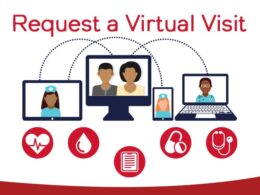GEHC
Friday, January 31, 2020
The Evolution of Patient Monitoring Systems
Over the past decades, a variety of early warning systems (EWS) have been implemented in hospital ICUs to alert clinicians to changes in patients’ status that may signal clinical decline and deterioration. These include systems that score the severity of symptoms based on vital sign parameters, as well as “track and trigger” systems designed to mobilize a rapid response to abnormal clinical signs. 1
More recently, with the broad adoption of electronic medical record (EMR) systems, many early warning monitoring methods have shifted from the less effective practice of manually scoring the severity of a patient’s condition to automated electronic alert systems that use EMR data, along with predictive algorithms, to notify critical care teams of declining patient status. 1,2
While monitoring systems that incorporate EMR data have been shown to improve the early detection of patient deterioration, their effectiveness is often hindered by issues around the accuracy of the data being communicated, as well as the ability of the monitoring system to track patients’ symptoms in real time. 1,2
Challenges to Effective ICU Monitoring
- Variations in Care Delivery
- The Necessity of Data Integrity
1.Variations in Care Delivery
One of the major challenges faced by ICU clinicians has been the delivery of fragmented, uncoordinated care that results in a lack of standardized communications and protocols that can proactively track patients in real time.
Exacerbated by the shortage of ICU intensivists, uncoordinated workflows, and nonadherence to pathways often leads to delays in identifying and appropriately managing patients with early signs deterioration. 1,2
2.The Necessity of Data Integrity
While EMR data, along with machine learning technology, have the potential to predict which patients are most likely to decline, given the vast amount of disparate and fragmented data, hospitals often struggle to aggregate and visualize patient data real time to effectively and accurately impact clinical decision-making.
Without the proper clinical context, the data may also lack the sensitivity and specificity needed to present a meaningful clinical picture of the patient’s status.
Without the ability to integrate data from multiple clinical systems and devices to provide patient context in real time, alert-driven workflows may not actually flag important changes in a patient’s condition, leading to alarm fatigue. 3
What is Data Integration and Interoperability?
On an information technology level, software issues such as multiple vendors that are not incentivized to work together, as well as interoperability and connectivity issues that prevent various software and monitoring systems from communicating effectively, also hamper hospitals’ ability to leverage EMR data effectively to monitor patients’ vital signs along with other clinical data.
This also includes manually entered patient EWS scores, clinical notes or physician orders that are not shared or integrated into the patient’s record. 2
Further, while monitoring tools have traditionally focused on patients in ICUs and the emergency department (ED), patients who have undetected signs of deterioration on hospital wards are at increased risk for admissions or readmission to the ICU, and even death 4;
all highlighting the need for effective monitoring and alert protocols across hospital settings.In fact, one recent study of hospital-associated sepsis mortality found that one in 8 of sepsis deaths were potentially preventable; the majority caused by delays in detection and medical errors in treatment. 5
Remote Tele-ICU: A New Standard in Patient Monitoring
Given the shortage of ICU intensivists, data integrity issues, and interoperability of many traditional ICU monitoring systems, the concept of a centralized digital virtual ICU solution that combines real-time clinical surveillance capabilities with state-of-the-art telemedicine technology, provides an innovative solution to a range of challenges in managing critical care patients. 6
“Virtual” ICU teams can leverage technology to analyze patient data, merging physiological parameters, such as vital signs and lab results with the patient’s EMR data to predict deterioration and provide support for appropriate treatment decision-making.
To address the shortage of “live” ICU intensivists-as well as a growing geriatric population with chronic conditions — a remote ICU can extend across multiple hospital settings, including the ICU, ED, and general wards, aggregating data from systems and devices from a variety of manufacturers and providing 24/7 real time monitoring of abnormal values and trends in vital signs, laboratory tests and other clinical data.
Real time virtual care could also help clinicians overseeing critical patient cases drives care standardization which could lead to improved outcomes. 6
Created with an entire enterprise in mind, a centralized solution can also provide a consolidated view of patients from multiple hospitals across a system or an entire network, including remote waveform viewing and access to diagnostic images.
From Early Warning Systems to Virtual ICU Platforms
A virtual care solution that integrates innovative clinical solutions,
- focuses clinical attention to critical patient cases, and
- reduces care variation,
- and represents a significant step in the evolution of ICU monitoring and its impact on patient care and outcomes for vulnerable patient populations.
References
- A Review of Early Warning Systems for Prompt Detection of Patients at Risk for Clinical Decline, J Trauma Acute Care Surg, January 2019. https://www.ncbi.nlm.nih.gov/pubmed/30633094 Accessed December 22, 2019.
- A Real-Time Early Warning System for Monitoring Inpatient Mortality Risk: Prospective Study Using Electronic Medical Record Data, J Med Internet Res 2019. https://cdn.journals.lww.com/jtrauma/Abstract/2019/07001/A_review_of_early_warning_systems_for_prompt.12.aspx Accessed December 22, 2019.
- To Catch A Killer: Electronic Sepsis Alert Tools Reaching A Fever Pitch? BMJ Quality and Safety, September 2019. https://www.ncbi.nlm.nih.gov/pmc/articles/PMC6702042/Accessed December 23, 2019
- Identifying Patients with Sepsis on the Hospital Wards, Chest, April 2017. https://www.ncbi.nlm.nih.gov/pmc/articles/PMC5472513/Accessed December 22, 2019.
- Prevalence, Underlying Causes, and Preventability of Sepsis-Associated Mortality in US Acute Care Hospitals, JAMA Network Open, Critical Care Medicine, February 2019. https://jamanetwork.com/journals/jamanetworkopen/fullarticle/2724768Accessed December 23, 2019.
- Tele-ICU: Efficacy and Cost-Effectiveness Approach of Remotely Managing the Critical Care, The Open Medical Informatics Journal, 2013. https://www.ncbi.nlm.nih.gov/pmc/articles/PMC3785036/Accessed December 23, 2019.

Originally published at https://www.gehealthcare.com.












